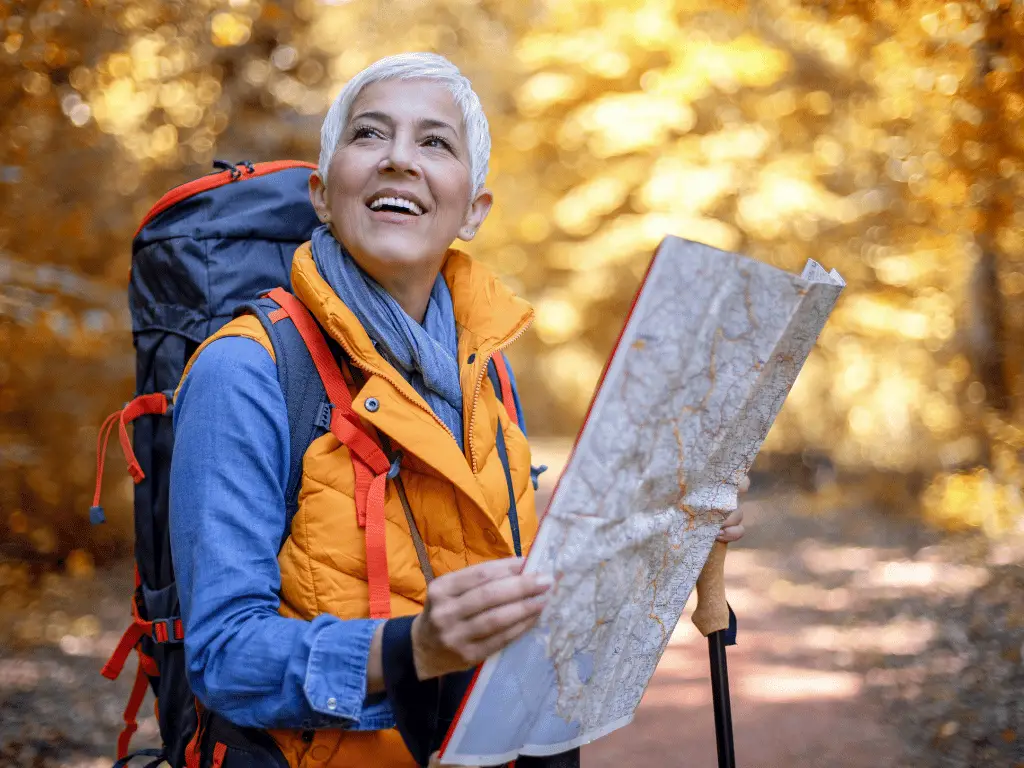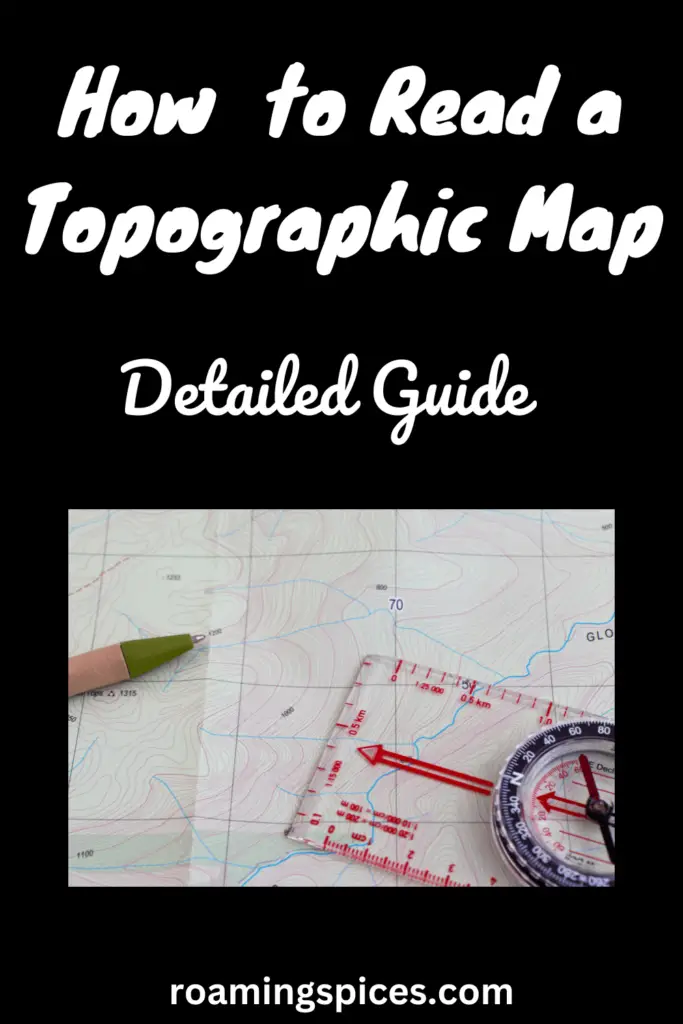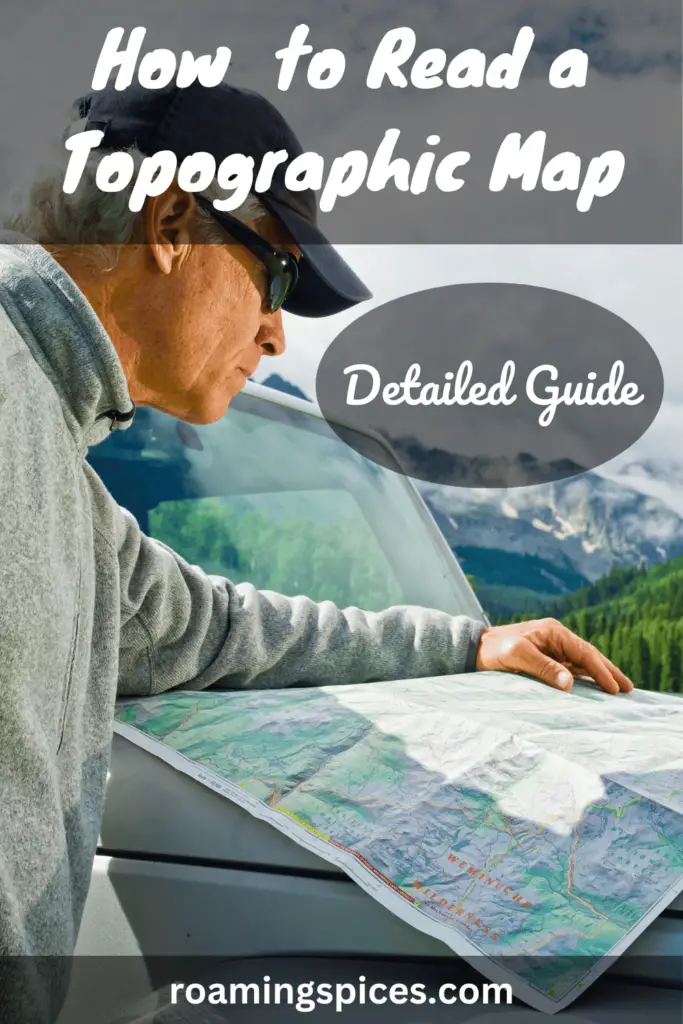
Hiking Navigation
If you’ve ever wondered how to read a topographic map and unlock the secrets of the landscape, you’re in the right place. In this article, we’ll break down the essential skills you need to decipher these maps and embark on adventurous journeys with confidence
Learn How to Read a Topographic Map for Hiking
Exploring the great outdoors on a hiking adventure can be an exhilarating experience, but it’s essential to have the right tools and knowledge to ensure a safe and successful journey. A topographic map is one of the most valuable tools at a hiker’s disposal.
These maps provide a wealth of information about the terrain, elevation, and landscape features, making them indispensable for planning and navigating your hikes.
This comprehensive guide will explore reading and interpreting topographic maps to enhance your hiking skills. Whether you’re a seasoned hiker looking to refine your map-reading abilities or a novice eager to embark on your first backcountry adventure, this article will give you the knowledge and confidence to tackle any trail with precision.
We’ll begin with the basics, deciphering the symbols and contour lines that make up a topographic map, and gradually progress to more advanced techniques for navigating challenging terrains.
By the end of this article, you’ll be equipped with the skills needed to read topographic maps effectively, ensuring a safer, more enjoyable hiking experience.
So, let’s get into some of the details about how to read a topographic map.
Understanding Topographic Maps
Understanding topographic maps is fundamental for any outdoor enthusiast, hiker, or adventurer. These specialised maps are unique in their ability to provide a detailed and three-dimensional representation of the Earth’s surface, helping us make informed decisions when navigating the wilderness.
At the heart of topographic maps are contour lines, which depict the elevation and shape of the terrain. By studying these lines, you can visualise hills, valleys, ridges, and other landforms, allowing you to anticipate the challenges and opportunities ahead on your hiking journey.
In addition to contour lines, topographic maps use various symbols and colours to represent natural and man-made features, such as rivers, roads, buildings, and vegetation. These symbols convey critical environmental information, enabling hikers to identify water sources, trailheads, and potential hazards.
Mastering the art of reading topographic maps is like unlocking a secret language of the landscape. It empowers you to plan routes, estimate distances, and gauge the difficulty of your hike. Whether you’re embarking on a day trip or a multi-day trek, a solid grasp of topographic map interpretation is your key to exploring the great outdoors with confidence and safety.

The Basics of Topographic Map Symbols
Topographic maps are treasure troves of information for hikers, geographers, and outdoor enthusiasts. To harness their power, it’s crucial to grasp the basics of topographic map symbols. These symbols are a universal language that conveys essential details about the landscape.
Contour lines, which represent elevation changes, are the backbone of topographic maps. Each line indicates a specific elevation above sea level, and the spacing between these lines reveals the steepness of the terrain. Understanding these lines helps hikers anticipate the ruggedness of their chosen path.
Beyond contour lines, many symbols and colours denote various natural and human-made features. Rivers, lakes, forests, roads, and buildings have distinctive symbols, making it easy to identify crucial landmarks and navigate effectively.
Mastering these symbols, you can precisely decipher the map’s narrative and plan your hike. Whether pinpointing a trailhead location or avoiding tricky terrain, these symbols provide the key to unlocking the secrets of topographic maps, ensuring your outdoor adventures are both enjoyable and safe.
Contour Lines: Your Trail’s Storytellers
Contour lines are the intricate web of curving lines that grace the surface of a topographic map, and they serve as a vital tool for understanding the landscape in three dimensions.
These lines visually represent the elevation changes on the Earth’s surface and provide crucial information for hikers, surveyors, geologists, and outdoor enthusiasts.
Each contour line on a topographic map represents a specific elevation above sea level, and the spacing between these lines indicates the steepness of the terrain. Close contour lines suggest steep slopes, while widely spaced lines signify more gradual inclines or flat areas.
Contour lines allow you to visualise the shape of the land, identify hills, valleys, ridges, and depressions, and plan your hiking route accordingly. By following the contour lines on a map, you can anticipate the difficulty of your hike and make informed decisions about the best path to take.
In essence, contour lines are the storytellers of the landscape, and mastering their interpretation is a valuable skill for anyone venturing into the outdoors.
Whether you’re exploring a new trail or conducting geological research, understanding contour lines is key to unlocking the secrets of the terrain and enhancing your overall outdoor experience.
Understanding Scale and Distance Measurements
Scale and distance measurements are vital aspects of topographic map reading, enabling hikers and outdoor enthusiasts to plan routes, estimate travel times, and gauge the distances they’ll cover during their adventures.
Scale: Every topographic map includes a scale bar or ratio that indicates the map’s relationship to the real world. For example, a 1:24,000 scale means that one unit of measurement on the map represents 24,000 units of the same measurement in reality.
Understanding the scale helps you translate map distances into actual ground distances. If the map scale is in miles, you can easily calculate the real-world distance by measuring the map distance and applying the scale ratio.
Grid Systems: Many topographic maps include grid lines dividing the map into squares, typically 1 km by 1 km. These grids assist in measuring distances more accurately and can be useful for pinpointing locations with precision.
By mastering scale and distance measurements on a topographic map, you can plan routes more effectively, estimate travel times, and ensure that you stay on track during your outdoor excursions, making for safer and more enjoyable adventures.
Map Reading Tools and Equipment
When venturing into the outdoors with topographic maps, having the right tools and equipment can make all the difference in successfully navigating the terrain. Here are some useful tools that can assist with your topographic map reading:
Compass: A compass is indispensable for orienting your map and determining direction. It helps you align the map with the landscape, making planning routes easier and staying on course.
Topographic Map Case: A waterproof map or bag protects your map from rain, and wear and tear. It ensures your map remains readable and intact, even in challenging weather conditions.
Ruler or Straightedge: A ruler or a transparent straightedge helps you measure distances accurately on the map, making it easier to plan routes and estimate travel times.
Protractor: A protractor aids in measuring angles and bearings on the map, helping you identify prominent landmarks or plot more precise courses.
GPS Device: While not essential, a GPS device can provide real-time location data and help you cross-reference your position with the map for added accuracy and security.
Pencil and Notepad: Taking notes and marking your map with essential information, such as waypoints, elevations, and planned routes, is crucial for staying organised and informed during your hike.
These map-reading tools ensure you can effectively use topographic maps to plan your routes, navigate the wilderness, and stay safe during outdoor adventures.
Practical Tips for Hiking with Topographic Maps
Using topographic maps for hiking enhances safety and navigation, but it’s essential to employ them effectively. Here are some practical tips to make the most of your topographic maps on the trail:
Familiarise Yourself with Map Symbols: Learn the key symbols and contour lines used on topographic maps. Understand what various features like rivers, trails, and elevation markings represent.
Map Orientation: Always ensure your map is oriented correctly with the terrain. To avoid confusion, use a compass to align the map’s north arrow with the actual north direction.
Scale Awareness: Pay attention to the map’s scale, as it determines how map distances translate to real-world distances. Use rulers or the map’s grid to measure distances accurately.
Check Contour Intervals: Understand the contour interval on the map, as it indicates elevation changes. A closer contour interval means steeper terrain.
Plan Your Route: Use the map to plan your hiking route, considering elevation changes, water sources, and landmarks: Mark waypoints and key features for reference.
Stay Updated: Maps can become outdated, so ensure you have the latest version for accurate information.
Practice Map Reading: Practice map reading skills in a familiar area to build confidence and proficiency before hiking.
Safety First: Carry a compass, GPS device, or smartphone with GPS capabilities for added safety and to cross-reference your position with the map.
By incorporating these practical tips into your hiking adventures, you’ll harness the full potential of topographic maps, making your outdoor experiences safer, more enjoyable, and more rewarding.
For experienced hikers and outdoor enthusiasts, topographic maps offer a wealth of advanced navigation techniques to take your skills to the next level:
Triangulation: Use triangulation to pinpoint your location precisely. Identify two or more prominent landmarks on the map, take bearings to them using a compass, and your exact location is where the lines intersect on the map.
Dead Reckoning: Combine your map-reading skills with pace counting. Estimate your distance by counting your steps and factor in terrain and elevation changes to calculate your location accurately.
Contouring: Involves traversing a slope along contour lines to maintain a consistent elevation. It can help avoid steep ascents or descents and is often employed in off-trail navigation.
Using UTM Coordinates: Utilise Universal Transverse Mercator (UTM) coordinates to specify locations on the map precisely. This method can be more accurate than latitude and longitude, especially in regions with consistent grid systems.
Terrain Association: Combine map features, contour lines, and your observations of the actual terrain to identify your location. This technique requires a deep understanding of the landscape and map symbology.
Grid Systems: Some topographic maps include a grid system that can help measure distances more precisely. Learn how to use this grid to your advantage.
Mastering these advanced techniques for navigation with topographic maps requires practice and experience. While they may not be necessary for every hike, they can be invaluable for more challenging terrain, off-trail exploration, or situations where precise navigation is crucial for safety and success.
Troubleshooting Common Map Reading Challenges
While topographic maps are invaluable for navigating the wilderness, they can present challenges requiring troubleshooting. Here are some common issues and solutions:
Misalignment: Incorrectly aligning the map with the terrain can lead to confusion. Use a compass to ensure proper map orientation, aligning the north arrow with true north.
Scale Confusion: Misinterpreting the map’s scale can result in incorrect distance estimates. Always double-check the map’s scale and use rulers or grid systems for accurate measurements.
Contour Line Overload: An excessive number of contour lines can be overwhelming. Focus on major intervals and patterns to understand the terrain’s general character.
Map Obsolescence: Outdated maps may need more current trail information or features. Check for map updates or supplement with GPS or digital maps for real-time data.
Weather and Visibility: Poor weather conditions or limited visibility can hinder map reading. Carry a waterproof map case and a compass with a sighting mirror for use in inclement weather.
Terrain Complexity: Highly complex or unfamiliar terrains can be challenging to navigate. Consider practising map reading skills in more straightforward areas before tackling more intricate landscapes.
GPS Reliance: Overreliance on GPS devices can lead to complacency with map reading skills. Balance technology with traditional map-reading techniques to ensure competency.
Troubleshooting these challenges is vital for safe and effective navigation using topographic maps. With practice and experience, you can become a proficient map reader, confidently tackling various terrains and conditions.
How to Read a Topographic Map – Conclusion
Learning how to read a topographic map is an essential skill for any outdoor enthusiast. These maps serve as invaluable tools for hikers, backpackers, geographers, and adventurers, offering a comprehensive view of the terrain in three dimensions.
By understanding contour lines, interpreting map symbols, and grasping elevation and slope, you gain the ability to navigate the wilderness with confidence and precision.
As we’ve explored in this article, topographic maps are key to unlocking the secrets of the landscape, helping you plan routes, anticipate challenges, and make informed decisions during outdoor excursions.
Moreover, the advanced techniques discussed here, such as triangulation and terrain association, enable you to take your navigation skills to the next level.
In a world increasingly reliant on technology, the timeless art of reading topographic maps remains an essential and empowering skill.
So, as you embark on your next adventure, remember that with practice, patience, and these newfound map-reading abilities, you’ll not only navigate the wild with ease but also forge a deeper connection with the natural world around you.
Like Our Article? Please Pin it!



Leave a Reply